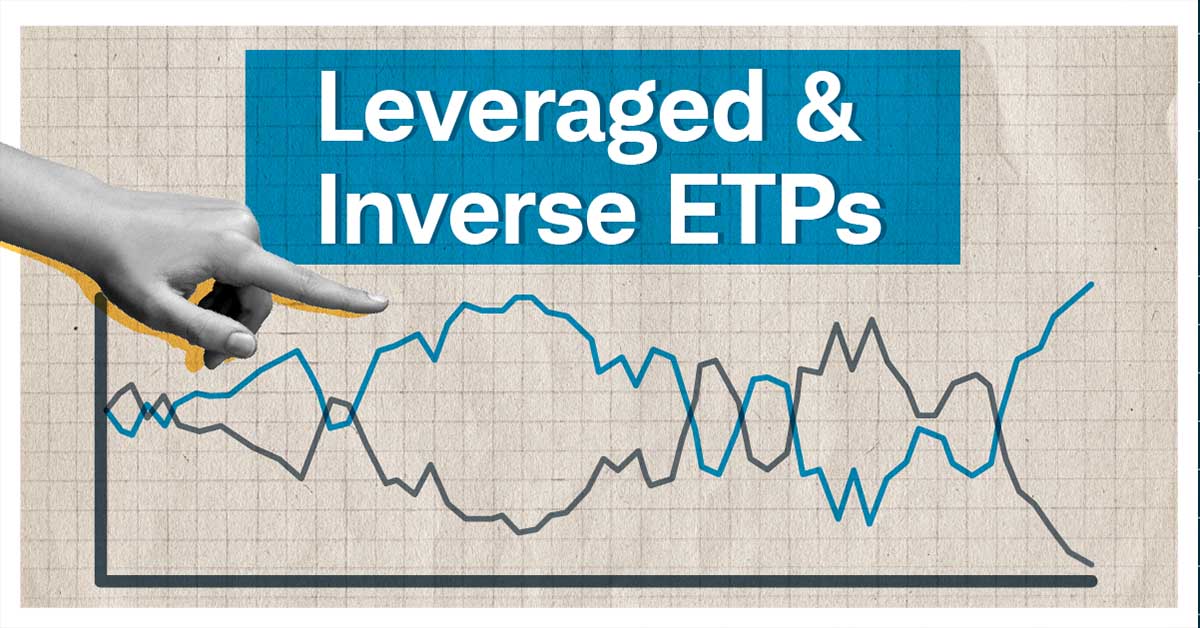Leveraged and inverse exchange-traded funds (ETFs) have gained popularity among active traders looking to amplify their exposure to market movements. These unique financial instruments offer a way to magnify gains or hedge against market downturns, but they also come with increased risks. Understanding how these funds work, their potential applications, and the risks involved is crucial for any investor considering adding them to their portfolio.
Introduction to Leveraged and Inverse ETFs
Leveraged and inverse ETFs differ significantly from traditional ETFs. While standard ETFs track an underlying index or asset, leveraged ETFs seek to multiply the performance of that index, typically by a factor of two or three. Inverse ETFs, on the other hand, are designed to provide the opposite return of their underlying index, effectively allowing traders to profit from a market decline.
For investors in Singapore or elsewhere, finding the right platform to trade these funds is crucial. Working with an ETF broker in Singapore can offer the necessary tools and access to these complex instruments. The main purpose of these products is to give investors and traders tools to capitalise on short-term market movements. For example, if an investor believes the market will rise, they can use a leveraged ETF to amplify their returns. Conversely, if they expect a downturn, they might use an inverse ETF to hedge against losses or profit from the decline. However, these products are not designed for long-term holding due to their unique structure, and misunderstanding how they work can lead to significant financial risks.
How Leveraged ETFs Work
The concept of leverage in finance allows an investor to control a larger position than what they would be able to with their actual capital. In the case of leveraged ETFs, these funds use financial derivatives such as options and swaps to achieve their targeted multiple of the underlying index’s performance. For example, a 2x leveraged ETF aims to deliver twice the daily return of its benchmark index. If the S&P 500 goes up 1%, the 2x ETF would aim for a 2% increase.
However, the mechanics behind leveraged ETFs are more complex than just multiplying the daily return. These ETFs reset their leverage daily, which means their performance can diverge significantly from the underlying index over time, especially in volatile markets. The effect of compounding returns can either magnify gains or exacerbate losses, depending on market conditions.
The benefits of leveraged ETFs include the ability to amplify returns with less capital, allowing for a more efficient use of funds in short-term trading strategies. However, they also carry a higher risk of loss, especially if the market moves in the opposite direction of what the investor anticipates. Additionally, the cost of maintaining leveraged positions through derivatives can lead to higher fees compared to traditional ETFs.
How Inverse ETFs Work
Inverse ETFs provide investors with a way to profit from a decline in the market without having to short individual stocks or indexes directly. Instead of buying and selling securities themselves, inverse ETFs use derivatives to achieve their goal of delivering the opposite return of their underlying index. If the S&P 500 drops by 1%, a 1x inverse ETF tracking that index would aim for a 1% gain.
The mechanics behind inverse ETFs are somewhat similar to those of leveraged ETFs. Both rely on financial derivatives to achieve their objectives, and both reset on a daily basis. This daily reset can also affect the long-term performance of inverse ETFs, meaning they are generally best suited for short-term trades or hedging against specific market downturns.
The key benefit of inverse ETFs is that they allow investors to hedge their portfolios without having to short individual securities, which can be complicated and risky. Instead, investors can simply buy an inverse ETF to profit from or protect against a market decline. However, like leveraged ETFs, inverse ETFs come with risks, including the potential for underperformance over time if the market moves unpredictably or sideways.
Key Applications for Leveraged and Inverse ETFs
Leveraged and inverse ETFs are best used in short-term trading strategies, where investors aim to capitalise on short-term market movements. One of the most common uses of these ETFs is in day trading and swing trading. Traders can use leveraged ETFs to amplify their returns in a rising market or inverse ETFs to profit from a decline. These products can also be used to hedge against sudden market downturns.
These ETFs are also valuable tools for market timing, allowing traders to take advantage of strong market trends. By using technical analysis and market indicators, traders can identify optimal entry and exit points, leveraging these ETFs to potentially maximise their profits in a short period. However, because these products reset daily and rely on derivatives, they are best suited for experienced traders who can actively monitor their positions and react quickly to market changes.
Conclusion: Balancing Risk and Reward
Leveraged and inverse ETFs offer significant potential for high rewards, but they also come with substantial risks. These products are designed to amplify market moves, allowing traders to capitalise on short-term trends and market volatility. However, the daily reset and compounding effects mean that they are not suitable for all investors, particularly those with a long-term focus or a low risk tolerance.

